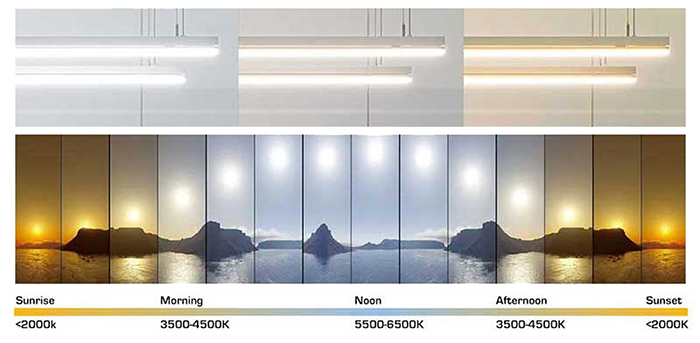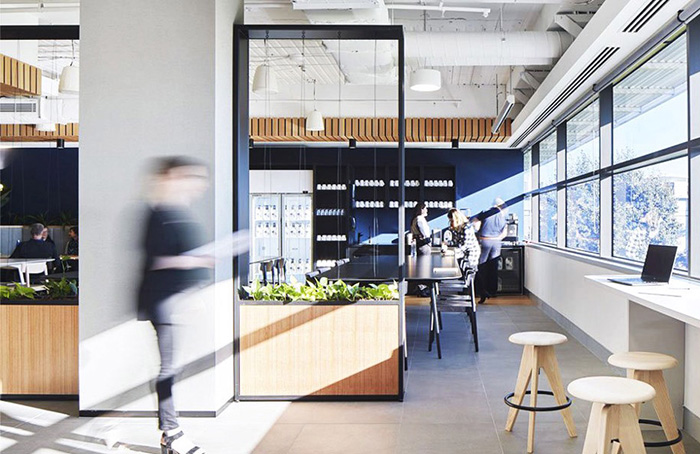Predicting the future of ceilings in architecture
Welcome to the world of cutting-edge design, where we’re not just looking at walls and floors, but are also turning our eyes upwards – to the ceilings! Here at MBS Architectural, we’re all about ceilings.
Ceiling design is an exciting space where creativity meets functionality, transforming the often overlooked ‘fifth wall’ into a key element of the design.
In this article, we’re diving into the latest and most innovative trends in ceiling design. We’re talking about everything from tech-savvy ceilings to new-age materials that are setting the stage for some jaw-dropping architectural masterpieces. So, let’s lift our gaze and explore what the future holds for the world above our heads!
Integrating technology
One of the most significant trends in ceiling design is the integration of technology. Smart technology integrated with ceiling panels and tiles are becoming more prevalent, equipped with sensors and smart lighting systems that adjust to the occupants’ needs, optimising energy consumption and enhancing the overall environment.
The concept of ‘smart ceilings’ is revolutionising how we interact with indoor spaces. Imagine stepping into a room where the lighting dynamically shifts to mirror the natural daylight outside. In the morning, as the sun begins to rise, these intelligent ceiling lighting systems respond by emitting brighter, energising light, simulating the fresh daylight that kickstarts our day. As the day progresses towards the evening, the lighting gradually softens, creating a calmer, warmer ambience that resonates with the setting sun. This constant adjustment not only enhances our connection to the natural world but also supports our circadian rhythms, impacting our mood, productivity, and overall wellbeing.
This intelligent adaption of indoor lighting, shaped by the rhythms of the day, exemplifies the innovative fusion of technology and design, transforming our everyday environments into spaces that are in tune with our natural biological clocks.

Photo credit: LED Dynamics
Acoustic ceiling innovation
Here’s a fresh take on a growing trend that’s making waves in modern architecture – unique acoustic solutions. You’ve probably seen those trendy open-plan spaces and exposed ceilings everywhere, right? They’ve become a favourite in recent years, especially as we move towards a more collaborative and interactive working style. But, here’s the catch: while these designs look uber-cool, they often fall short in the sound absorption department. So, what’s the smart fix if we want the edgy look of an exposed ceiling but also need to keep noise in check?
Enter the Ceiling Raft System, a game-changer in Australian design – and we’re starting to see why. Picture this: a ‘floating’ ceiling panel that sits above you. Not only does it look super sleek, but it’s also perforated with a layer of sound-absorbing material hidden behind it. What’s really clever about this floating design is that it traps sound on both sides of the panel. This means you get double the sound absorption power, allowing for less coverage but still nailing that high level of sound control. It's like hitting two birds with one stone – you keep the cool exposed design factory of your design and get an acoustic environment that’s as comforting as it is stylish. This is architectural innovation at its best – blending aesthetics with practicality in a way that makes you go, “Why didn’t we think of this sooner?”

An example of a metal raft acoustic ceiling by Durlum
The rise of human-centred ceiling design
Let’s talk about something that’s really close to our hearts in the world of design – human-centred design.
Imagine designing a space, a product or even a service that’s like a high-five to every individual who uses it. That’s a human-centred design for you. It’s all about putting on your empathy hat and diving deep into what people really need and want.
Now, let’s mesh the concept of human-centred design with the art of ceiling design. Imagine this: ceilings crafted not just to fill a space but to resonate with people living and working under them. Ceiling spaces that don’t just exist overhead but interact with us on a personal level.
By weaving in the principles of human-centred design, ceiling design transcends from being just a structural element to an integral part of our daily experience – making spaces more intuitive, comfortable, and ultimately, more ‘human’. It’s like giving ceilings a soul that connects and empathises with those living beneath them, transforming them from mere architectural features into companions in our everyday journey.

Port Melbourne Secondary College is a great example of human-centred design in an educational setting
Biophilic design
Now, let’s chat about a trend that’s been sprucing up Australian design for a while – biophilic design.
It’s like giving your ceiling a nature-inspired makeover. We’re seeing more designs where ceilings aren’t just ceilings – they’re a feast for your senses. Think ceilings with organic shapes, dapples of natural light, natural materials such as timber battens, or even some lush greenery hanging out up there.
It’s not just about making a space look pretty; it’s about creating a vibe that makes users feel good, too. It’s a game-changer, turning everyday spaces into retreats that boost our mood and wellbeing. Who knew a ceiling could do all that?

Design by Unispace
Sustainable materials
Let’s talk about the role of materials in ceiling design. It’s not just about choosing materials that look good – it’s about picking options that are kind to our planet. We’re seeing a smart shift towards sustainable and eco-friendly choices in ceiling design.
Thick recycled materials, circular supply chains or alternative methods of production that create less impact. Materials that aren’t just good for the environment, but also versatile and durable. Imagine ceilings that not only add an aesthetic touch but also play a part in a more sustainable future.
It’s about finding that sweet spot between eco-consciousness and practical design – where your ceiling isn’t just a design element, but a testament to smarter and less impactful choices.
Lower-carbon aluminium: It's better.
When you use Apollo Green’s LocAl aluminium, you are making a more sustainable choice, lowering the carbon emissions of the aluminium used in your project, and most importantly, doing better for the planet.
Conclusion
The sky’s the limit when it comes to ceiling innovation and creativity. From smart technology that syncs with our natural rhythms to acoustic solutions that bring harmony to our spaces and a soul-soothing touch of biophilic elements – we’re not just designing ceilings; we’re crafting experiences. As we look upwards, we’re not just seeing ceilings; we’re playing with a canvas of possibilities, where each design is a step towards a future that’s more in tune with both our human needs and the world around us.
Main image: Cranked aluminium blades installed at HSF fit-out – designed by Bates Smart

